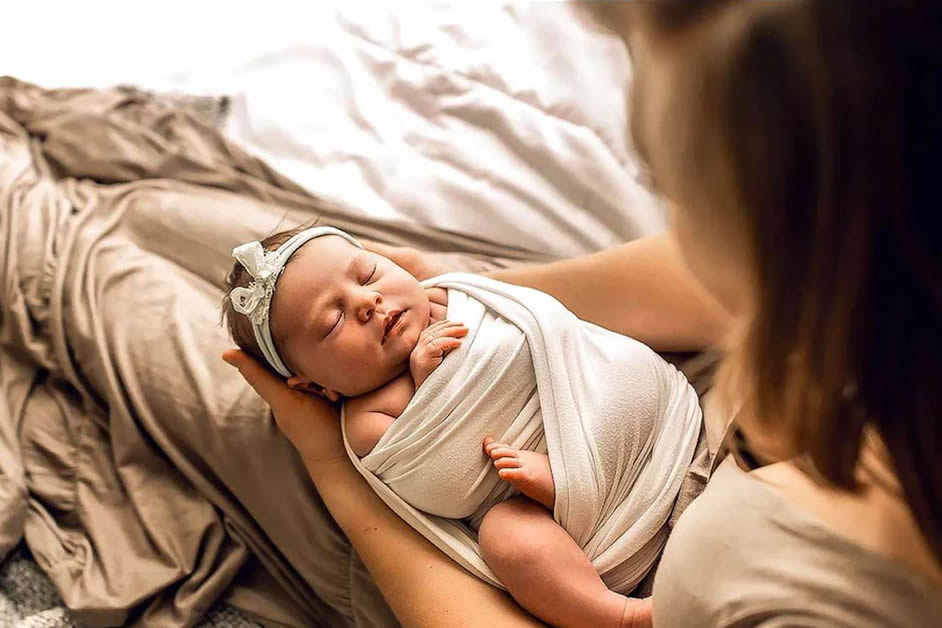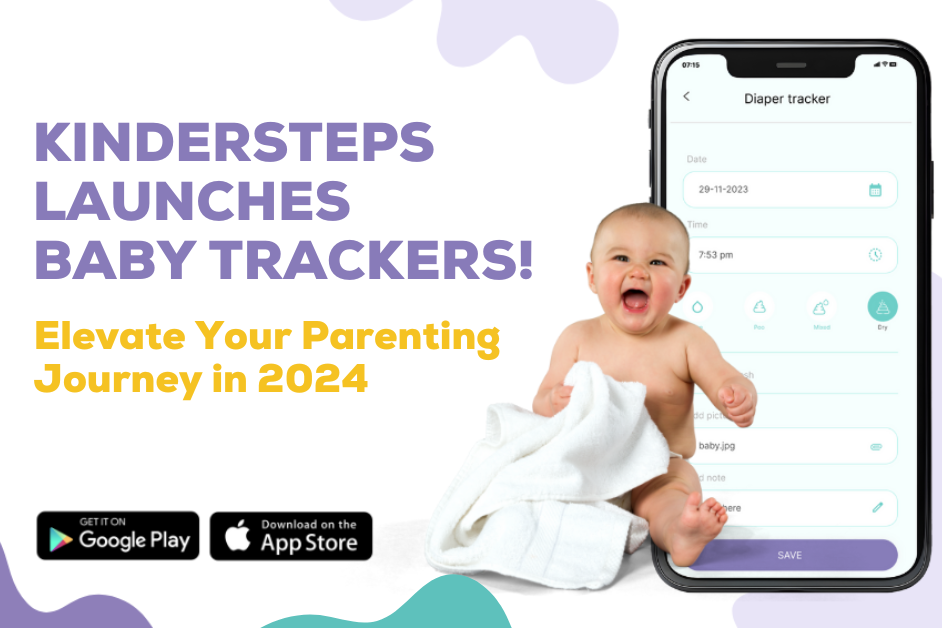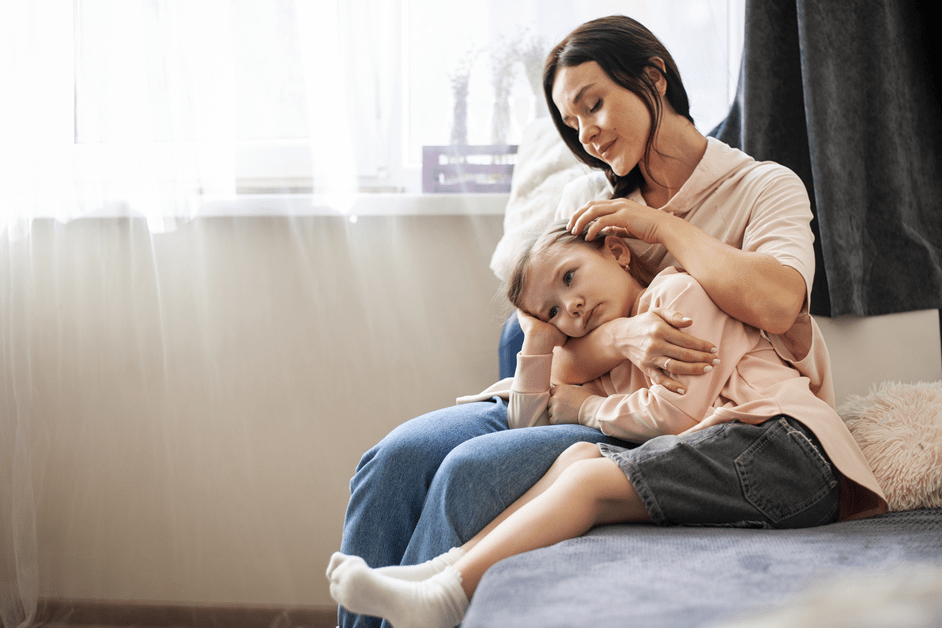Monitoring your Child’s Development: Milestones for 0-24 Months
The first year of your child is one of the most crucial growth phases of their life. While they are almost entirely dependent on you, they are going through critical changes in their body and brain. Along with your baby’s weight and height, there are many other signs of their development, termed ‘developmental milestones.’
How to know if your child is on track? How can you help them in their development?
From helpless newborn to active toddler: It takes just 12 short months for your baby to undergo this incredible transformation. Babies grow and change at an astounding pace, and every month brings new and exciting developments.
New moms and dads often wonder what to expect next and how to know if their baby’s development is on track. Instead of focusing too much on developmental milestones, however, it’s important to remember that babies all develop at their own pace. There’s a fairly wide “window” for when it is normal for a baby to reach a particular developmental stage.
Since your child’s birth, they learn something new every day from their surroundings and their interactions with you. These developments are reflected in various gross and fine motor skills, language skills, and social skills.
We have divided our developmental milestones into the core parts of child development:
- Motor milestones: When will my baby sit independently? When will my baby start to crawl? Motor milestones track the baby’s gross motor skills (in their core and upper body) and fine motor skills (in their hands and feet).
- Sensory milestones: When will my baby be able to visually track objects? When will my baby have a regular sleep schedule? Sensory milestones track the development of my baby's 7 senses.
- Communication milestones: When will my baby say their first words? When do toddlers begin responding to questions? These language milestones are the building blocks of a baby’s communication and social skills.
- Feeding milestones: When is my baby ready for finger foods? How long should a baby nurse for? These milestones help track when babies start new phases of feeding.
Motor Milestones
- While lying on tummy, pushes up on arms
- While lying on tummy, lifts and holds head up
- Able to move fists from closed to open
- Able to bring hands to mouth
- Moves legs and arms off of the surface when excited
- While lying on back, attempts to reach for a toy held above their chest
- While lying on back, visually tracks a moving toy from side to side
- While lying on back, keeps head centered to watch faces or toys
- Able to calm with rocking, touching, and gentle sounds
- Enjoys a variety of movements
- Quiets or smiles in response to sound or voice
- Turns head towards sound or voice
- Shows interest in faces
- Makes eye contact
- Cries differently for different needs (e.g. hungry vs. tired)
- Coos and smiles
- Latches onto nipple or bottle
- The tongue moves forward and back to suck
- Drinks 2 oz. to 6 oz. of liquid per feeding, 6 times per day
- Sucks and swallows well during feeding
Motor Milestones
- Uses hands to support self while sitting
- Rolls from back to tummy and tummy to back
- While standing with support, accepts entire weight with legs
- Reaches for nearby toys while on tummy
- While lying on back, reaches both hands to play with feet
- While lying on back, transfers a toy from one hand to the other
- Uses both hands to explore toys
- Generally happy when not hungry or tired
- Brings hands and objects to mouth
- Able to calm with rocking, touching, and gentle sounds
- Is not upset by everyday sounds
- Enjoys a variety of movements
- Reacts to sudden noises or sounds
- Listens and responds when spoken to
- Begins to use consonant sounds in babbling, e.g. “da, da, da”
- Makes different kinds of sounds to express feelings
- Notices toys that make sounds
- Uses babbling to get attention
- Shows interest in food
- Opens mouth as spoon approaches
- Moves pureed food from the front of the mouth to the back
- Begins to eat cereals and pureed foods – Smooth, pureed food (single ingredient only), like carrots, sweet potato, squash, apples, pears
Motor Milestones
- Sits without support
- Sits and reaches for toys without falling
- Moves from tummy or back into sitting
- Starts to move with alternate leg and arm movement e.g. creeping, crawling
- Picks up head and pushes through elbows during Tummy Time
- Turns head to visually track objects while sitting
- Shows more control while rolling and sitting
- Picks up small objects with thumbs and fingers
- In simple play imitates others
- Enjoys a variety of movements – bouncing up and down, rocking back and forth
- Explores and examines an object using both hands and mouth
- Turns several pages of a chunky (board) book at once
- Experiments with the amount of force needed to pick up different objects
- Focuses on objects near and far
- Investigates shapes, sizes, and textures of toys and surroundings
- Observes environment from a variety of positions – while lying on back or tummy, sitting, crawling, and standing with assistance
- Uses an increased variety of sounds and syllable combinations in babbling
- Looks at familiar objects and people when named
- Recognizes sound of their name
- Participates in two-way communication
- Follows some routine commands when paired with gestures
- Shows recognition of commonly used words
- Simple gestures, e.g. shaking head for “no”
- Imitates sounds
- In a highchair, holds and drinks from a bottle
- Begins to eat thicker pureed and mashed table foods
- Enjoys chew toys that can massage sore and swollen gums during teething
- Stays full longer after eating
- Starts to look and reach for objects, such as, food that is nearby
- Shows strong reaction to new smells and tastes
Motor Milestones
- Pulls to stand and cruises along with furniture
- Stands alone and takes several independent steps
- Moves in and out of various positions to explore the environment and get desired toys
- Maintains balance in sitting when throwing objects
- Claps' hands
- Releases objects into a container with a large opening
- Uses thumb and pointer finger to pick up tiny objects
- Enjoys listening to songs
- Explores toys with fingers and mouth
- Crawls to or away from objects baby sees in the distance
- Meaningfully uses “mama” or “dada”
- Responds to simple directions, e.g. “Come here”
- Produces long strings of gibberish (jargoning) in social communication
- Says one or two words
- Imitates speech sounds
- Babbling has sounds and rhythms of speech
- Pays attention to where you are looking and pointing
- Responds to “no”
- Begins using hand movements to communicate wants and needs, e.g. reaches to be picked up
- Finger feeds self
- Eating an increasing variety of food
- Begins to use an open cup
- Ready to try soft-cooked vegetables, soft fruits, and finger foods (banana slices, cooked pasta)
- Might be ready to start self-feeding with utensils
- Enjoys a greater variety of smells and tastes
Motor Milestones
- Walks independently
- Squats to pick up a toy
- Stacks two objects
Sensory Milestones
- Helps with getting dressed/undressed
- Has a regular sleep schedule
- Eats an increasing variety of foods
Communication Milestones
By 15 months:
- May use 5-10 words
- Combines sounds and gestures
- Imitates simple words and actions
- Consistently follows simple directions
- Shows interest in pictures
- Can identify 1-2 body parts when named
- Understands 50 words
By 18 months:
- Responds to questions
- Repeats words overheard in conversation
- Continues to produce speech-like babbling
- Points at familiar objects and people in pictures
- Understands “in” and “on”
- Responds to yes/no questions with head shake/nod
Feeding Milestones
- Increases variety of coarsely chopped table foods
- Holds and drinks from a cup
19-24 Month Milestones
Communication Milestones
By 21 Months:
- Uses at least 50 words
- Consistently imitates new words
- Names objects and pictures
- Understands simple pronouns (me, you, my)
- Identifies 3-5 body parts when named
- Understands new words quickly
- Begins to use 2-word phrases
- Uses simple pronouns (me, you, my)
- Understands action words
- Uses gestures and words during pretend play
- Follows 2-step related directions e.g. “Pick up your coat and bring it to me”
- Enjoys listening to stories
What to do if your child is not reaching their key developmental milestones?
If your child is missing a developmental milestone, request an appointment with a healthcare provider to ask them about how you can get your baby on track.
Remember every baby is different, and milestones typically occur within a general age range. Baby’s early years are some of the most important years for their development, which is why early detection and early intervention are so critical.
Parenting tips to promote your child’s developmental milestones
While these developmental milestones are a natural course of action, you can help promote their developmental skills. Here are some tips to help your child reach their developmental milestones:
- Talk to your baby, sing to them, play music, and do things that stimulate hearing.
- Repeat your baby’s sounds and add words when doing so.
- Play with your baby with toys.
- Cuddle and hold your baby.
- Give them “tummy time,” that is, place them on the tummy to help them develop their motor skills and core strength
- Expose your baby to different visually rich environments. This will help them develop sensory skills and encourage them to see things in an upright posture
- Massage their arms, legs, and trunks. This not only strengthens their muscles but also helps them develop a sense of touch.






.jpg?alt=media&token=166b64a9-274c-400c-95e4-baf0013e7e43)
